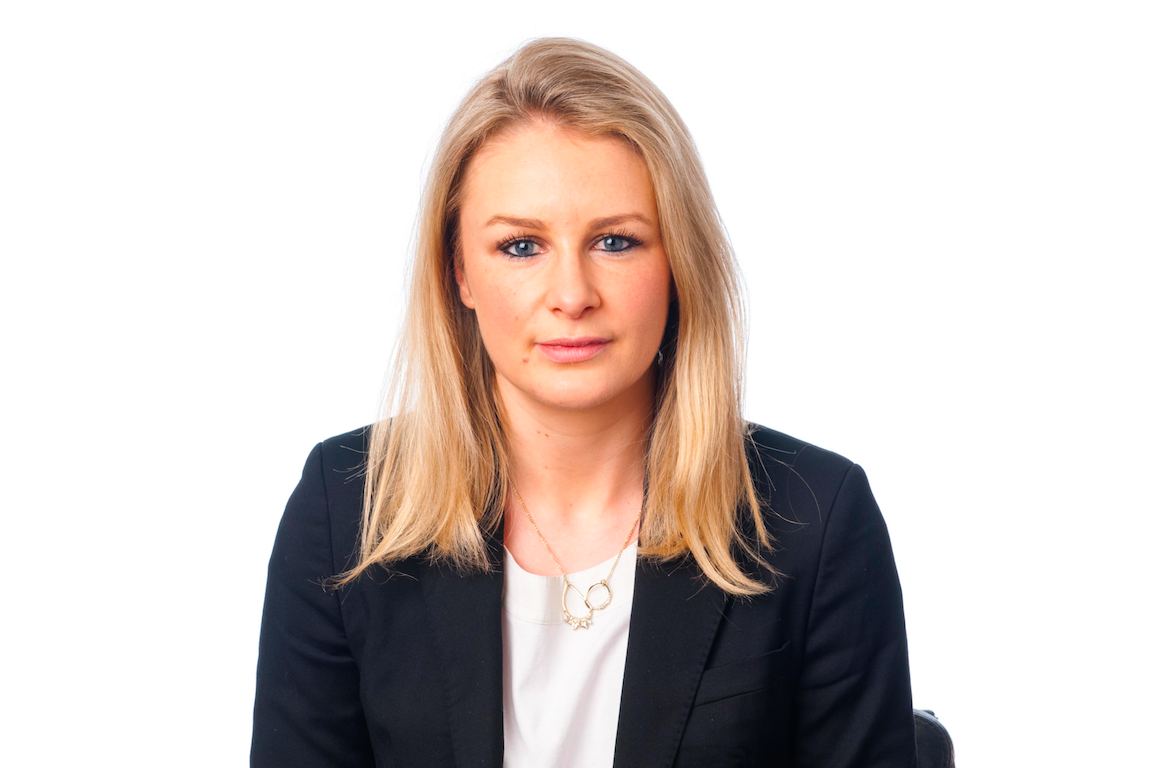Laura Vaughan, head of Direct Lending at Federated Hermes, has a very clear claim: “Private markets may still be classified as alternative investments, but in many ways they have matured into part of the mainstream.” In his experience, investors were attracted to its low volatility, its limitation with other asset classes and the cash income for calculating liabilities. In this interview he gave us his vision on private assets, delving into direct credit.
Private assets have gained popularity and relevance in the last 12 months, what do you think has been behind this increased interest in them?
Over the last 12 months, the attractiveness has increased further as the underlying investments in private debt are floating rate loans. So as EURIBOR, for example, increased from negative to close to 4%, this additional yield flowed straight through to investors’ return.
Do you see this trend continuing in 2024, and what could continue to drive interest in them?
Yes, the yield available from a direct lending investment remains very attractive in the current environment. With an expectation now for central banks to be patient with rate cuts, this robust yield environment will not change materially. Coupled with an expected uptick in private equity M&A activity, driven by for example a more stable interest rate environment, and the large amounts of dry powder needed to be invested by private equity funds, the level of demand for loans will remain strong, and therefore direct lenders will continue to be able to deploy at a steady rate.
One of the private assets we have heard most about is private credit. What does it bring to investors’ portfolios right now?
The sharp rise in interest rates from record lows over the last two years has resulted in higher yields at a time when inflation has been rising, allowing the private credit asset class to act as an inflation hedge to a certain degree.
Direct loans to small and mid-sized European businesses have continued to generate strong and steady yields over the last decade, even showing resilience during the pandemic. By contrast, yields from traditional fixed income securities remain low and corporate direct lending offers investors an illiquidity premium to boost portfolio returns as well as low degree of volatility relative to the public asset classes.
In a context that has changed (technical recession in major countries, very gradual decline in inflation, change in central bank monetary policy), what do you think is the best way to approach private debt investment? Why go for direct lending? What does this asset class bring to the table?
After nearly two decades in a low interest rate environment in Europe, the direct lending market is adjusting to a period of higher-for-longer. It continues to offer investors an attractive level of stability in their investment portfolios. An allocation to direct lending, focused on the right strategy, can provide an investor with limited correlation to other asset classes, low volatility compared with public markets, diversified exposure to underlying industries, quarterly cash income and an element of inflation protection.
The sustained higher interest rate environment will benefit investors who have backed conservative direct lending funds. As loans are floating rate assets, investors will benefit from the rise in base rates on loans. However, companies burdened with high levels of financial leverage will continue to struggle under the increased cost of debt. This will put pressure on their debt service coverage covenants and will cause increases in defaults. As a result, restructurings will increase, especially for those direct lending funds that have lent with aggressive loan structures to cyclical companies. Fund raising will be difficult for these funds as investors will continue backing more conservative direct lending strategies.
Where do you see the opportunities for this asset class and in which types of companies or sectors?
We have identified a ‘sweet spot’ for direct lending at present – and for the foreseeable future – lending senior secured debt in the lower middle market in Northern European markets. The lower middle market in these geographies is less crowded versus the large cap and upper mid market space. As a result of this, as well as the banks continued dominance here, loan documentation remains robust while lending structures are conservative. In today’s interest rate environment, this segment offers compelling returns, with yields of 9%+ available for lowly levered transactions.
Northern Europe also contains the most creditor friendly jurisdictions in Europe, which coupled with the full security packages and significant equity cushions sitting behind senior secured debt, means net returns in this space should remain close to gross levels.
Our senior secured direct lending funds don’t invest in any loans to borrowers who are linked to retail, discretionary consumer spending or who have a reliance on commodities. We view these as higher risk due to the inherent cyclicality in the end markets. In the present market environment, business services, software and healthcare are attractive sectors to invest in. Borrowers that are well established; operate in sectors with high barriers to entry; and generate stable, sticky and predictable cashflows are, not surprisingly, attracting a lot of attention from lenders.
Dada la subida de los tipos de interés que hemos observado, ¿es probable que aumenten los impagos?
La clase de activos ha disfrutado de bajas tasas de impago en los últimos años y las recuperaciones han sido sólidas. Sin embargo, no podemos ignorar el hecho de que estamos invirtiendo en un entorno con varias incógnitas importantes, como unos tipos de interés “más altos durante más tiempo”, una menor confianza de los consumidores y la posibilidad de que se produzcan nuevos shocks que podrían hacer subir la inflación o tener un impacto adverso en las cadenas de suministro mundiales. En esta fase del ciclo crediticio, los fondos que han sido menos disciplinados en el análisis del crédito, o que tienen prestatarios con un apalancamiento excesivo que ahora están luchando para hacer frente a una mayor carga de intereses, se encontrarán con más dificultades en la cartera e impagos. Por lo tanto, es importante que los gestores dispongan de una sólida cartera de originación y sean muy selectivos con las empresas a las que prestan. Por este motivo, en Federated Hermes damos prioridad a la calidad de las operaciones y a la originación diferenciada basada en asociaciones bancarias para nuestra estrategia de préstamos directos.
Given the rise in interest rates we have seen, is it likely that defaults will increase?
The asset class has enjoyed low rates of default over recent years and recoveries have been strong. However, we can’t ignore the fact that we are investing in an environment with several large unknowns including ‘higher for longer’ interest rates, dampened consumer confidence and the potential for further ‘shock’ events that could drive inflation higher or have an adverse impact on global supply chains.
At this stage of the credit cycle, funds that have been less disciplined around credit analysis, or who have over-levered borrowers who are now struggling to meet an increased interest burden, will encounter more portfolio distress and defaults. It is important therefore, that managers have a strong origination pipeline and are highly selective in the companies they lend to. For this reason, at Federated Hermes, we prioritise deal quality and differentiated origination built on bank partnerships for our direct lending strategy. This gives our team a continued full pipeline of transactions in our preferred segment, whilst also providing our clients with access to deals unavailable elsewhere in the market.
Regarding refinancing processes, why do you think this will be an opportunity for the direct lending sector?
When a borrower refinances, the documentation and debt structure is re-set. In this current risk-off market, the opportunity to include superior clauses, for example two covenants instead of one and tighter restrictions around cash leakage, is higher. As well as this, the level of debt borrowers are now seeking to incur is reduced, and therefore senior secured is gaining market share from unitranche. This is due to the lower cost of senior secured loans, albeit with reduced flexibility in the loan documentation. This means that for senior secured direct lenders, there should be an increased pool of opportunities, at a lower leverage, with enhanced loan documentation and higher yields than in more recent years. This will provide strong net returns for investors, and continue to attract investors to the asset class.
What is the outlook for the direct lending sector in 2024?
Direct lending is coming of age as an asset class at a time when the macroeconomic landscape is shifting. For investors, this means the ability to source high-quality deals through differentiated means will be key to maintaining performance over the long term.
With a higher cost of debt, focus in 2024 will be on cost rather than flexibility in loan terms. This should benefit the senior secured lenders over the unitranche lenders, who have higher return targets. This means that senior secured lending will continue to gain market share over unitranche products in the European loan market. 2024 will likely be a great year for direct lenders who have been disciplined in their lending approach, and therefore not distracted with restructurings.
Deal flow is expected to pick up significantly, and has done in the first two months of 2024, as private equity primary M&A volumes pick-up. This should provide a robust pipeline of deal opportunities for direct lenders to select from.



 For Fórmate a Fondo
For Fórmate a Fondo